Research Facilities
Aquatic Biogeochemistry Lab
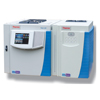 The research goals of this lab is to understand changes in carbon (C) and nitrogen (N) cycles as well as food web structures in present ecosystems and reconstruct past variations preserved in sediment records.
The research goals of this lab is to understand changes in carbon (C) and nitrogen (N) cycles as well as food web structures in present ecosystems and reconstruct past variations preserved in sediment records.
CITGO Observatory
 The Observatory, made possible by CITGO, uses four Mead telescopes to aid in the study of our sky. There is one 16" LX200 Schmidt-Cassegrain telescope in the dome and a 10" Reflector from Orion with dobsonian mount. Additionally, the Observatory holds one 8" LX200 Schmidt-Cassegrain, a 7" LX200GPS Maksutov-Cassegrain, and a floor-mounted 90mm ETX. The picture at the right was taken by students using the Observatory during the lunar eclipse in October 2004.
The Observatory, made possible by CITGO, uses four Mead telescopes to aid in the study of our sky. There is one 16" LX200 Schmidt-Cassegrain telescope in the dome and a 10" Reflector from Orion with dobsonian mount. Additionally, the Observatory holds one 8" LX200 Schmidt-Cassegrain, a 7" LX200GPS Maksutov-Cassegrain, and a floor-mounted 90mm ETX. The picture at the right was taken by students using the Observatory during the lunar eclipse in October 2004.
Dive Lockers
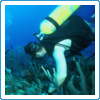 The College of Science & Engineering has all the necessary dive equipment necessary to conduct its research efforts. Equipment includes: a 16 foot Zodiac inflatable boat with 40 hp Yamaha outboard, 16 aluminum tanks, 7 sets of regulators and BCDs, 2 underwater diver propulsion systems, 5 Nikonos underwater cameras (including cameras and attachments for close-ups and monitoring specific dive sites), an underwater video camera and housing, and various other gear.
The College of Science & Engineering has all the necessary dive equipment necessary to conduct its research efforts. Equipment includes: a 16 foot Zodiac inflatable boat with 40 hp Yamaha outboard, 16 aluminum tanks, 7 sets of regulators and BCDs, 2 underwater diver propulsion systems, 5 Nikonos underwater cameras (including cameras and attachments for close-ups and monitoring specific dive sites), an underwater video camera and housing, and various other gear.
Fisheries Ecology and Physiology Lab
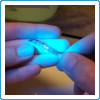 The Fisheries Ecology Lab focuses on the marine biological sciences, particularly marine ecology. Its research is field-oriented, and considerable time is spent collecting data in the marine environment. Research interests focus on understanding the relative value of habitat for aquatic organisms emphasizing marine and estuarine fishes. Much of this research is directed towards determining temporal and spatial distributions of fishes, as well as the causes and consequences of the habitat use in terms of age, growth, and mortality.
The Fisheries Ecology Lab focuses on the marine biological sciences, particularly marine ecology. Its research is field-oriented, and considerable time is spent collecting data in the marine environment. Research interests focus on understanding the relative value of habitat for aquatic organisms emphasizing marine and estuarine fishes. Much of this research is directed towards determining temporal and spatial distributions of fishes, as well as the causes and consequences of the habitat use in terms of age, growth, and mortality.
Genomics Core Laboratory
 The molecular instrumentation core facility in the College of Science & Engineering was established to provide faculty and student researchers with access to research-grade instrumentation for the life sciences. At present, it includes equipment for both preparation and analysis, including two high-speed centrifuges, a thermal cycler, and a DNA sequencer and fragment analysis instrument.
The molecular instrumentation core facility in the College of Science & Engineering was established to provide faculty and student researchers with access to research-grade instrumentation for the life sciences. At present, it includes equipment for both preparation and analysis, including two high-speed centrifuges, a thermal cycler, and a DNA sequencer and fragment analysis instrument.
Geophysics Facility
 We apply integrated approaches to investigate a wide range of complex hydrological, geological, and environmental problems. Our current research activities involve the use of spaceborne, airborne, and terrestrial geophysical data, remote sensing data, numerical modeling, statistical approaches, as well as GIS techniques to monitor availability and variability of freshwater resources in arid and semi-arid environments in Texas, Middle East, and Africa.
We apply integrated approaches to investigate a wide range of complex hydrological, geological, and environmental problems. Our current research activities involve the use of spaceborne, airborne, and terrestrial geophysical data, remote sensing data, numerical modeling, statistical approaches, as well as GIS techniques to monitor availability and variability of freshwater resources in arid and semi-arid environments in Texas, Middle East, and Africa.
Instrumentation
 The Departments of Life Sciences and Physical and Environmental Sciences use a wide array of equipment and apparatus:Instrumentation Lab, NMR (installed Summer 2006), Flow cytometer, Automated nutrient analyzer , Video imaging and analysis stations, X-ray diffractor, Subzero freezers, and additional equipment.
The Departments of Life Sciences and Physical and Environmental Sciences use a wide array of equipment and apparatus:Instrumentation Lab, NMR (installed Summer 2006), Flow cytometer, Automated nutrient analyzer , Video imaging and analysis stations, X-ray diffractor, Subzero freezers, and additional equipment.
Isotope Core Laboratory
 The Isotope Core Laboratory (ICL) is located in TAMUCC's Natural Resources Center (NRC) room 3230. The purpose of the facility is to support basic and applied research in the biological, geological and environmental sciences in South Texas and promote collaborations among faculty at TAMUCC, other research institutions and industry.
The Isotope Core Laboratory (ICL) is located in TAMUCC's Natural Resources Center (NRC) room 3230. The purpose of the facility is to support basic and applied research in the biological, geological and environmental sciences in South Texas and promote collaborations among faculty at TAMUCC, other research institutions and industry.
Laguna Madre Field Station (LMFS)
 The Laguna Madre Field Station provides a site and facility for field training, education, and research in coastal, environmental, and ecological studies. The mission of the LMFS is to increase understanding of the Laguna Madre, adjacent bays, estuaries, and Gulf ecosystems, as well as to foster ecosystem stewardship through training, education, research, and outreach.
The Laguna Madre Field Station provides a site and facility for field training, education, and research in coastal, environmental, and ecological studies. The mission of the LMFS is to increase understanding of the Laguna Madre, adjacent bays, estuaries, and Gulf ecosystems, as well as to foster ecosystem stewardship through training, education, research, and outreach.
Plankton Lab
 Research includes taxonomy, algal ecology (including Harmful Algal Blooms occurring in plankton, benthic, freshwater, marine, and hypersaline systems), remote sensing, aquaculture, biofuels, and hypersaline mats. Chemical analyses include photopigments, mycosporines, freshwater toxin detection and quantitation, and marine toxin detection and quantitation.
Research includes taxonomy, algal ecology (including Harmful Algal Blooms occurring in plankton, benthic, freshwater, marine, and hypersaline systems), remote sensing, aquaculture, biofuels, and hypersaline mats. Chemical analyses include photopigments, mycosporines, freshwater toxin detection and quantitation, and marine toxin detection and quantitation.
Ruth O'Brien Herbarium
 Part of the Department of Life Sciences, the primary mission of the Ruth O'Brien Herbarium is to provide support for teaching and research in the biological and environmental sciences. The Herbarium contributes to major floras, produces local and regional floras, and collects material from the field to distribute duplicates. Students learn plant identification to provide information services to government agencies, the academic community, and the public.
Part of the Department of Life Sciences, the primary mission of the Ruth O'Brien Herbarium is to provide support for teaching and research in the biological and environmental sciences. The Herbarium contributes to major floras, produces local and regional floras, and collects material from the field to distribute duplicates. Students learn plant identification to provide information services to government agencies, the academic community, and the public.
Tidal Forensic Anthropology Services (T-FAS)
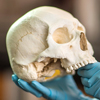 The laboratory foci are forensic anthropology research and forensic case work related to the human skeleton; Personal identification of deceased individuals; Blunt and sharp force trauma analysis; and Evaluation of pathological conditions.
The laboratory foci are forensic anthropology research and forensic case work related to the human skeleton; Personal identification of deceased individuals; Blunt and sharp force trauma analysis; and Evaluation of pathological conditions.
Wet Lab
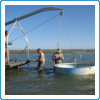 The Texas A&M University Corpus-Christi Wet Lab is part of the Harte Research Institute (HRI). Please visit the HRI website for more information on lab activities.
The Texas A&M University Corpus-Christi Wet Lab is part of the Harte Research Institute (HRI). Please visit the HRI website for more information on lab activities.